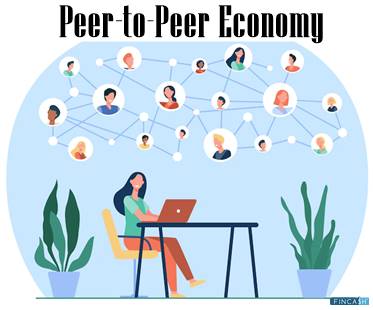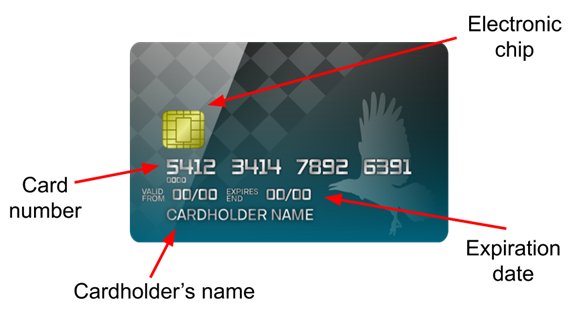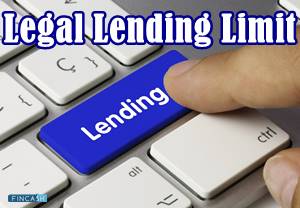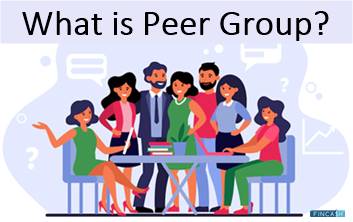How Does Peer to Peer Lending Work?
Technology is transforming the conventional lending method, just like almost every other domain. Peer-to-peer lending, often called P2P lending, is the new contemporary form of lending.

In this article, let's find out how exactly peer-to-peer lending works and how you can make the most of it.
What is P2P Lending?
People frequently turn to banks or other financial organisations, like Non-Banking Financial Companies (NBFCs), for loans when they need money. However, these banks often reject loan applications due to issues with Income, incomplete paperwork, poor credit, etc. When this happens, friends and family occasionally step in to help out by lending money. However, people who lend money only do so when they have a relationship with the borrower and are confident that they will be reimbursed. This lending model has a significant drawback that - people can only lend to and borrow from a small number of others people in their own networks. Thus, many people struggle to find funding at crucial points in their lives.
Peer-to-Peer (P2P) lending can be helpful in these trying times. This lending type is a crucial connecting tool between individuals looking to lend money and those who need it. While borrowers pay the interest, investors or lenders earn a significant amount with ease. Financial institutions, like banks, are not required to act as an intermediary because the transaction is conducted directly between two parties through either a website or an application. Thus, P2P lending is capable of potentially increasing Financial Inclusion on a global scale as a source of funding, as:
- It is reasonably accessible to people with Bad Credit or those in the low-income category
- Borrowers can obtain a loan through P2P lending to pay for their education, debt consolidation, business expansion, etc
Talk to our investment specialist
What is the Process of P2P Lending?
P2P lending is carried out through a website that directly connects lenders and borrowers. Open a lender account on a P2P network if you want to lend money. And anyone in need of a loan registers as a borrower. These systems then assess borrowers based on a variety of criteria. They don't just focus on credit ratings while evaluating the eligibility; they conduct their own thorough investigations, which include:
- Looking into the borrower's employment
- Credit history,
- Income, etc
Furthermore, these peer-to-peer lending apps and platforms also use state-of-the-art technology to track borrowers' habits through social media and other apps.
The creditworthiness of borrowers is determined based on this evaluation, and they are divided into various risk categories. It forms the foundation for how much interest a borrower must pay. A borrower's interest rate will be lower the better their creditworthiness is and vice versa. Such a platform generally performs assessments for various borrowers, and lenders can review these assessments and choose borrowers to lend money based on the risk and return they are willing to take. Similar to this, borrowers can contact lenders by viewing their profiles.
The monthly payments or transactions between the lender and the borrower are not subject to a margin on P2P platforms. Instead, they demand payment from both parties for the services they render. RBI controls these platforms to ensure they don't engage in suspicious or fraudulent activities, such as hoarding lenders' or borrowers' repayment funds.
The process is as follows if you wish to borrow money:
- Choose the best P2P lending platform
- Complete the application there to continue with a credit check
- If your application is accepted, review the applicable loan rate. You can advance the loan into the funding step if you want to proceed
- Wait as potential investors examine the loan listing and make a funding decision
- If the funding of your loan is successful, go to the payback stage
- Throughout the loan, you will make consistent payments
- Each lender receives a proportionate share of each payment you make, divided among all your lenders
Benefits and Drawbacks of P2P Lending
Both lenders and borrowers can benefit significantly from peer-to-peer lending in the following ways:
- More Significant Returns for Investors: Compared to other investment kinds, P2P lending typically offers investors higher returns
- Easily Accessible: It is a readily available source of Capital for some borrowers than traditional loans from financial institutions. This could be brought even after the borrower's poor Credit Score or the loan's unusual purpose
- Reduced Interest Rates: Due to greater lender competition and lower loan initiation fees, P2P loans typically have lower interest rates
Peer-to-peer lending also has a few drawbacks, such as :
- Credit Risks: These loans are subject to significant credit risks. Also, several applicants for these loans have poor credit histories, preventing them from getting traditional loans from banks. Thus, a lender needs to be aware of the likelihood that their counterparty may Default
- Lack of Insurance or Government Protection: If the borrower defaults, the government does not offer the lender insurance or any other kind of protection
Rules for P2P Lending in India
P2P lending in India has existed for decades. But now, it has come a long way and has been modified in terms of the rules applicable to it. Here is more on them:
- P2P lending falls under the Reserve Bank of India (RBI), which has established certain rules and regulations for how P2P lending services must operate. For example, any business that wants P2P lending services must apply for an NBFC-P2P licence with the RBI
- RBI also ensures that these platforms pose no significant systemic risk in its capacity as a regulator
- According to RBI regulations, the company's board will follow a previously determined Business Continuity Plan if a P2P platform decides to shut down. The strategy includes every detail needed to safeguard the data of all lenders and borrowers. The plan also provides information regarding debt servicing for the loan duration if the platform is closed
Understanding the Risks Of P2P Lending
Risks associated are as follows:
Market-linked goods, including stocks, Bonds, gold, and Mutual Funds, have daily price fluctuations. P2P lending, however, does not include any market-related risk. Therefore, the value of your P2P lending assets won't change daily. Peer-to-peer lending entails the risk of the borrower failing to make interest and principal payments. A P2P platform can help lenders recover money if a borrower defaults and can even take legal action against the defaulter. But it does not ensure that the money borrowed will be returned
Evaluating possible risks that a borrower brings to the table becomes crucial because Default Risk is the leading risk you are assuming as a lender. Unfortunately, the P2P lending platform's assessment completely controls you as an investor. Therefore, if the platform's risk-scoring model is poor and unable to assess the borrower's level of risk accurately, you end up assuming more risk than exists
One defence against credit risk is that investors can spread their money among various highly creditworthy borrowers. While this method can help you reduce risk to some level, it is not completely eradicated
Returns on P2P Lending
Like any investment, P2P lending has a return based on how much risk you are willing to take. Two factors can be used to assess the risk of peer-to-peer lending:
- The creditworthiness of the borrower
- The duration of the loan
- The returns increase with the length of the loan period. Additionally, the larger the returns, the worse the borrower's credit history
- To illustrate how much money investors can make through P2P lending, there aren't any Industry-wide statistics available
When analysing the returns, the Default Rate and platform fees are two essential factors to consider. That's because these will diminish your actual return. For instance, if your investment generates a 20% return and the non-performing assets generate 5% of that return, your net returns will be 15%. If the platform cost is 2%, your net return will be 13%.
Taxation of P2P Lending Profits
Investors in P2P lending effectively receive interest on the money they lend. Therefore, interest income from P2P lending is taxed, just like interest income from other instruments, like FDs. P2P lending interest income is categorised as 'income from other sources.' It is included in the lender's income and taxed in the appropriate tax bracket. Therefore, if a person is in the 30% tax bracket, the interest will be subject to a 30% tax.
Consider the following scenario: You invested Rs. 1 lakh in P2P lending, and you received 15%, or Rs. 15,000, in interest. If your tax bracket is 30%, your tax payment will be Rs. 4,500 (30% of Rs. 15,000). This tax treatment significantly impacts your final returns, and your actual post-Tax Return in the case mentioned above is 10.5%.
Is Peer-to-Peer Lending Secure?
P2P lending is riskier than a Savings Account or a deposit certificate, but the interest rates are significantly greater. This is because most of the risk, which banks or other financial institutions typically Handle, is taken on by the investors in peer-to-peer lending platforms.
Conclusion
When banks only provide 5% interest on 1-year certificates of deposit, the potential of earning 12–14% interest through P2P lending does seem appealing. However, there are hazards associated with P2P lending investments, and they are riskier than Equity Fund investments. Although RBI governed the first P2P lending in 2017, this investment product is still in its infancy. Thus, it is obvious that this concept will go through its evolutionary cycles and experience several upheavals. As a result, you should only consider Investing through P2P lending if you are willing to increase the risk level in your Portfolio. Keep in mind that P2P lending is not a replacement for fixed-income securities in your portfolio.
All efforts have been made to ensure the information provided here is accurate. However, no guarantees are made regarding correctness of data. Please verify with scheme information document before making any investment.












